
What Is High-Frequency Hearing Loss
High-frequency hearing loss occurs when a person does not hear high-frequency sounds at a normal level. This means the high pitches (frequencies) sounds must be louder to be heard. Sounds above 2kHz are generally considered to be high-frequency sounds.
If we look at where speech sounds fall on the speech frequency spectrum, we can see that speech sounds above 2kHz include ‘k’, ‘f’, ‘th’, and ‘s’.
These higher frequencies are where many consonants are found, and they are crucial for the clarity of speech. In contrast, lower frequencies are where vowels reside, contributing more to the volume or loudness of speech.
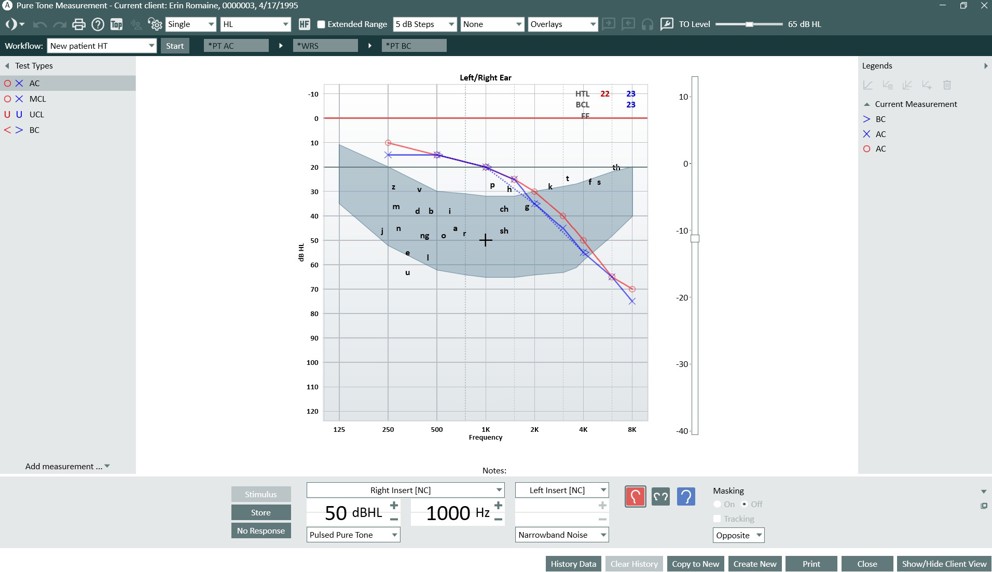
High-Frequency Hearing Loss Symptoms
The symptoms of a high-frequency hearing loss will depend on how severe the hearing loss is but can include:
- Feeling like people are mumbling.
- Difficulty hearing high-pitched sounds, such as the microwave beeping.
- Finding it more difficult to follow conversations in noisy environments.
- Difficulty hearing on the phone.
- Finding communication more tiring.
Diagnosis and Audiometric Testing
An audiometric test can diagnose high-frequency hearing loss. During the test, patients are asked to indicate when they can hear a sound. Sounds are played at different frequencies, and the softest sound a patient can hear at each frequency is determined. Then, the hearing levels are plotted on a particular type of graph called an audiogram.
With high-frequency hearing loss, the sounds on the right-hand side of the graph, which are high-frequency sounds, need to be louder to be heard and are outside of the normal range on the graph.

The hearing care professional will also perform several other tests to evaluate ear health and the nature of the hearing loss. Importantly, they will also perform speech perception testing, which helps assess the effects of high-frequency hearing loss on communication.
What Causes High-Frequency Hearing Loss
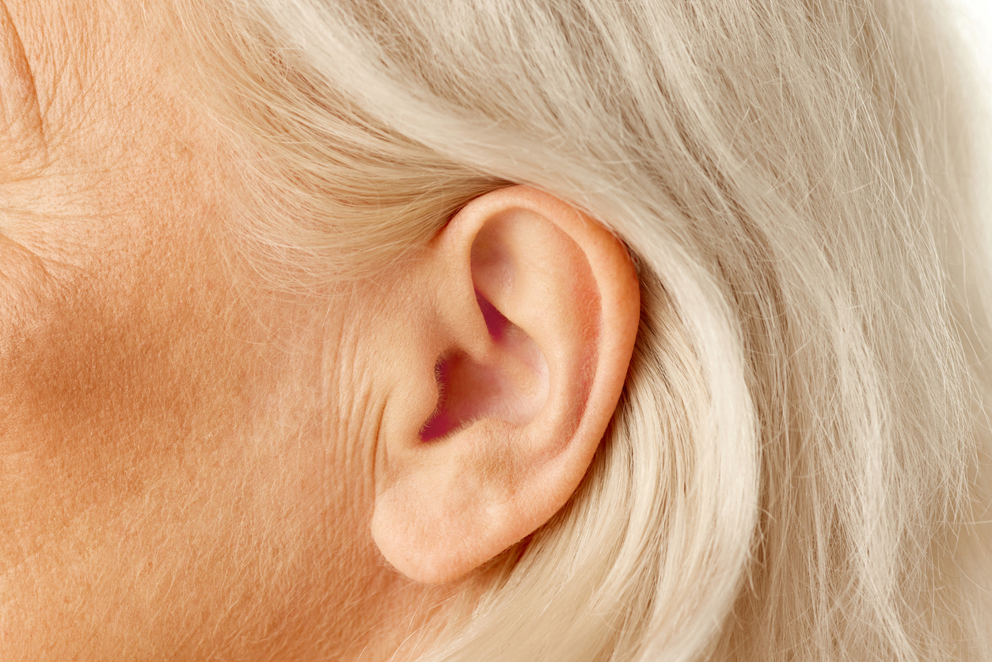
There are several potential causes of high-frequency hearing loss; sometimes, a patient has multiple contributing causes to their overall hearing loss.
Environmental or Occupational Noise Exposure
Exposure to loud noises damages the hair cells in the inner ear (cochlea). When these hair cells are damaged, they no longer transmit sound information as they should. The tonotopic (frequency/pitch) organization of the cochlea means that the high frequencies are more vulnerable to damage from exposure to loud noises. Usually, repeated exposure to loud noises causes high-frequency hearing loss. However, it is possible to have high-frequency hearing loss due to a single exposure to high noise levels.
Noise-induced high-frequency hearing loss is generally preventable. Therefore, wearing appropriate hearing protection when exposed to loud noises, such as machinery or music, is essential.
Age and Genetic Factors
Like all body parts, ears can get worn out over time. This means the likelihood of high-frequency hearing loss increases as you get older. As with noise-induced hearing loss, the high-frequency parts of the cochlea are more prone to damage.
This is why the incidence of high-frequency hearing loss increases in the older age groups. While age plays a significant role in high-frequency hearing loss, this cause interacts with other factors, such as genetic predisposition to hearing loss, lifetime noise exposure, health history and exposure to ototoxic substances. This is why the degree of hearing loss in older people varies significantly.
Age and genetic factors are not contributors to hearing loss that you can prevent; however, knowing that these things can cause hearing loss allows you to be aware of any changes to your hearing so you can seek a hearing test and appropriate treatment early to minimize the impact.
Medications and Health Conditions
Some medications can damage your hearing. These include certain:
- aminoglycoside antibiotics
- chemotherapy agents
- loop diuretics
- non-steroidal anti-inflammatory drugs (NSAIDs)
- quinine and antimalarials
- macrolide antibiotics
- vancomycin
- antineoplastic drugs
- salicylates (e.g. high-dose aspirin)
Your doctor will weigh the risks of the effects of these drugs on your hearing against the potential benefits for you before prescribing them. Often, an early sign of ear damage from medications is the onset of new tinnitus or the worsening of pre-existing tinnitus. If you think a medication is affecting your hearing, speak to your doctor.
There are also health conditions that can increase your risk of hearing loss. These include: diabetes mellitus
- hypertension (high blood pressure)
- hyperlipidemia (high cholesterol)
- infections (viral or bacterial)
- chronic kidney disease.
Taking care of your general health and managing any chronic health conditions can help you maintain your hearing.
Innovative High-Frequency Hearing Loss Treatment
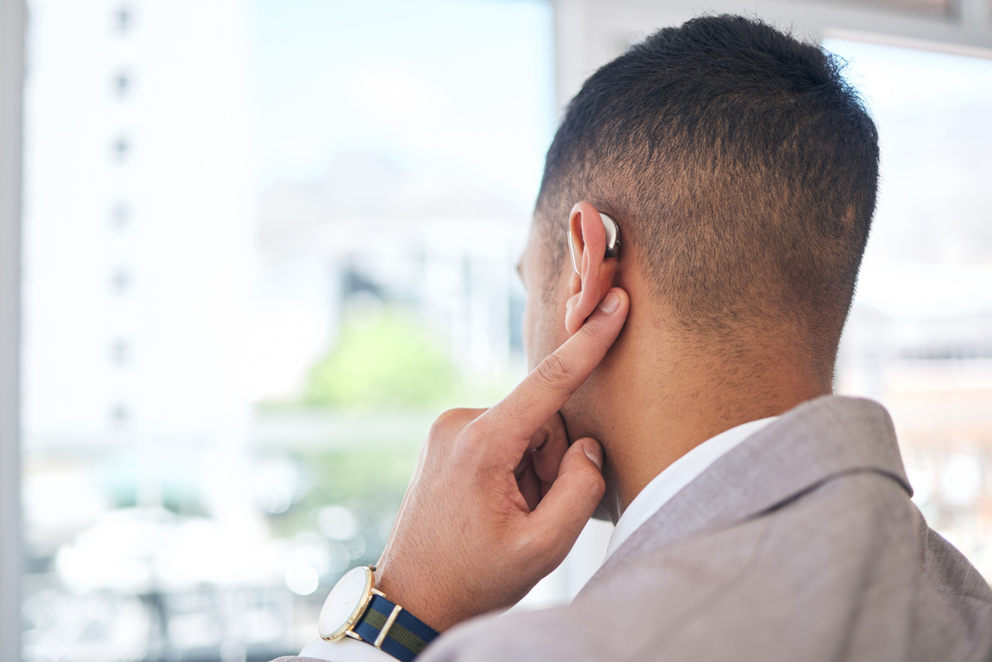
Why Experts Recommend Hearing Aids
Hearing aids are often recommended to patients who have high-frequency hearing loss. A hearing aid amplifies the sounds that a patient does not hear well and processes the sound it picks up to make it as clear as possible. Sound processing is necessary because it must still travel through the damaged auditory system, which can distort it. This is why simple amplification is insufficient for optimal outcomes for people with hearing loss. By making the sound as clear as possible, it helps the damaged hearing system make use of the information. Advancements in digital technology and artificial intelligence have made modern hearing aid technology very good at mitigating the effects of high-frequency hearing loss and improving the ability of people with hearing loss to communicate.
Hearing aids come in a range of styles and technology levels. Your hearing care professional will recommend them based on your hearing loss, ear health and shape, communication needs, and personal preferences. Your hearing care professional will also use their expertise to program the hearing aids specifically for your needs so you can obtain the best results possible from them.
Beyond Hearing Aids: Other Listening Devices
Other listening devices can be used with or without hearing aids to overcome difficulties caused by high-frequency hearing loss.
Someone with hearing loss who has difficulty hearing the television but is not ready for hearing aids may benefit from an assistive listening device specifically for television. This usually consists of a streaming device connected to the television and a pair of headphones worn by someone with hearing loss. The device streams the television output directly to the headphones for better clarity and control over the volume.
There are also television streamers that work in conjunction with hearing aids. These stream the television sound to the hearing aids. These can be useful for people who need a little more assistance with the television than hearing aids alone can offer.
Other devices can be used in conjunction with hearing aids to help with understanding speech in noisy environments or for hearing a particular person. These are remote microphones or Roger technology — these work by picking up the speaker’s voice and sending it to the hearing aids.
If you struggle in certain situations, even when wearing your hearing aids, talk to your hearing care professional about other useful accessories.
Recent Advances in Cochlear Implants
Cochlear implant technology has improved significantly since these devices first became available. Options are now specifically designed for people with severe high-frequency hearing loss, and developments in surgical techniques to preserve residual hearing have also widened the scope of candidates.
Only some people with high-frequency hearing loss will be candidates for a cochlear implant. However, these are often the next step if satisfactory results cannot be obtained with hearing aids. A cochlear implant consists of two parts. The external part collects sound from the environment, including speech, processes this and sends messages to the internal component. The inside part is surgically implanted under the skin with an electrode array inserted into the cochlea. A cochlear implant allows the damaged hair cells to be bypassed to stimulate the auditory nerve directly.
FREE GUIDE
Master Diagnostic Audiology - A Practical Handbook for Audiologists
From foundational tests like tympanometry to advanced speech assessments, this guide equips audiologists with the latest tools and techniques to deliver accurate, insightful diagnoses and set every patient on the right path to better hearing.
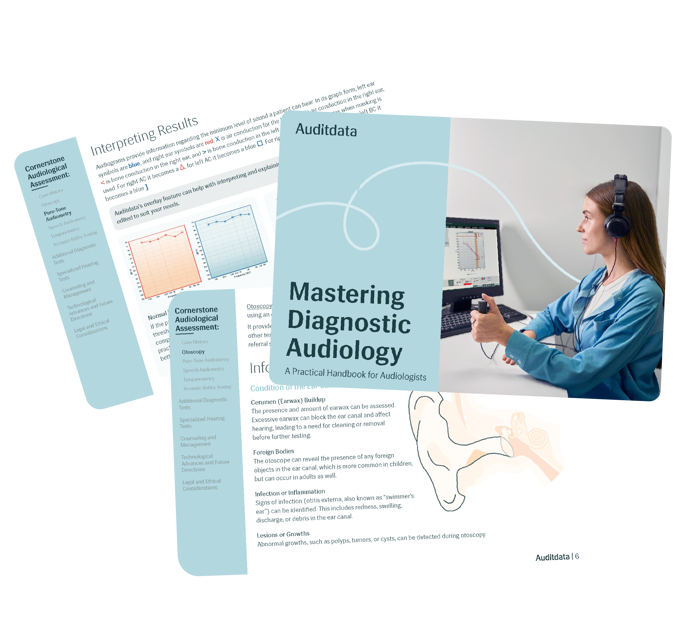
Strategies for Managing High-Frequency Hearing Loss
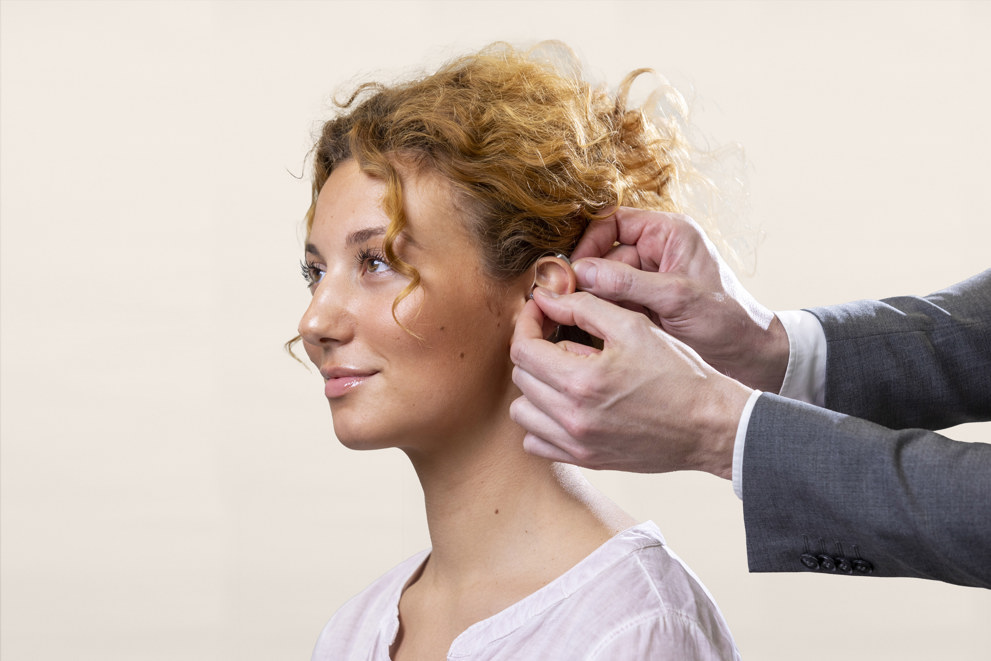
Communication Tips for Everyday Life
Communication strategies can help overcome the effects of high-frequency hearing loss, whether or not a person has hearing aids.
While many communication strategies can be used by people with hearing loss, some key ones are:
-
Look at the person you are talking to. Much of the information you do not hear with high-frequency hearing loss is visible on a person’s face when they speak. By looking at the person you are talking to, you can combine the visual information with what you hear to put the overall message together.
-
Encourage other people to get your attention before talking to you. This will allow you to look at them and focus on what they are saying, optimizing your ability to understand.
-
Where possible, reduce the background noise. At home, this means turning off the television or music when conversing. When out and about, pick a café or restaurant with less background noise and seat yourself with your back towards the bulk of the noise to help you hear better.
-
Tell people what you need to make it easier for them to hear. Most people will help you make listening situations easier if they know what you need.
Lifestyle Adjustments and Coping Strategies
Managing high-frequency hearing loss can be tiring and make communication stressful. It is essential to be patient with others and yourself and engage in self-care. This includes taking time out for yourself and using stress management techniques to help you relax.
Pursuing your hobbies is a great way to take care of yourself. If your stress levels are high, engage in relaxation techniques such as gradual muscle relaxation, focused breathing, mindfulness, or meditation. It does not matter which method you use if it helps you.
Pediatric Considerations

Early Detection in Children
Children with high-frequency hearing loss are at risk of speech delays and difficulties with their schooling. These children must be identified early so they can be given any assistance they require to keep up with their peers. Some countries have neonatal or childhood hearing screening programs in place. However, high-frequency hearing loss can develop at any age. If you are ever concerned about your child’s hearing, they should have a hearing test. This way, if there is a problem, you can address it. If there is no issue with their hearing, then other potential causes for their difficulties can be explored.
Specialized Treatment and Education Plans for Younger Patients
Children with high-frequency hearing loss often need extra support at school. This support may include a teaching aid or additional equipment to help them hear the teacher. This equipment might consist of a remote microphone or a Roger/FM system. It can help stream the teacher’s voice into the child’s hearing aids so that the child can hear better in classroom environments. The child may also benefit from being seated at a particular place in the classroom, such as up the front. A professional specializing in educational audiology can advise on appropriate plans and interventions for children with hearing loss based on their specific needs.
High-Frequency Hearing Loss FAQ
-
The degree of disability caused by high-frequency hearing loss depends on several factors, including the degree of hearing loss, the capacity of technology to mitigate its effects, and individual circumstances. Interventions and treatments, such as hearing aids, usually aim to minimize the disability caused by high-frequency hearing loss.
-
People with high-frequency hearing loss do not hear the clarity of speech. This makes speech sound dull and can often make it feel like people are mumbling rather than pronouncing the ends of their words. In the early stages of high-frequency hearing loss, it is pretty common to mistake the effects of the hearing loss for people mumbling.
-
High-frequency hearing loss can get worse over time. If you have hearing loss, it is essential to have regular check-ups. This enables your hearing care professional to adjust your treatment plan as needed. Hearing aids are very flexible in how they are programmed, meaning that if your hearing changes, your hearing aids can often be reprogrammed to compensate for that change.
-
Tinnitus – a ringing, buzzing, or other sound in your ears or head that is not caused by an external source – is not caused by hearing loss. However, the damage to your ears that causes hearing loss can also cause tinnitus. Therefore, the two conditions often co-exist. For some people, tinnitus does not cause a problem; for other people, it can be pretty bothersome. For people with bothersome tinnitus, a lot can be done to help you with your tinnitus. If you have difficulty with tinnitus, speak to your hearing care professional, who can advise you.
-
While high-frequency hearing loss cannot usually be surgically corrected or ‘cured,’ there are various options for treating its effects. The most common intervention is hearing aids programmed to compensate for it. These are often used in conjunction with communication strategies. For people whose hearing loss is too severe for hearing aids to benefit them, cochlear implants may be an option.
Other Blogs You Might Enjoy

Comprehensive Hearing Test vs. Hearing Screening
Explore the role of a comprehensive hearing test as compared to a quick screening. How accurate are hearing tests, and what kind of results can we expect?

Improving Satisfaction Rates for Hearing Aid Users
Learn how to guide your customer hearing aid experience through the initial follow up period and beyond to ensure that customers remain satisfied.
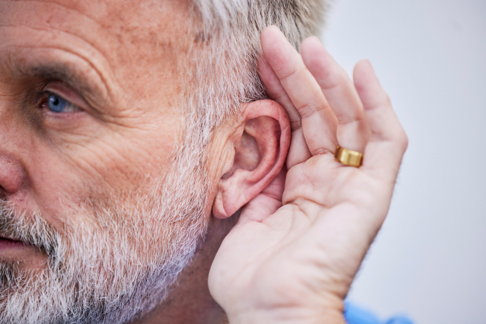
Conductive vs Sensorineural Hearing Loss: Distinct Characteristics and Treatment Strategies
Mastering the key differences between conductive vs sensorineural hearing loss, including symptoms, causes, and treatment options.
Don't Miss Out On the Latest Insights On Audiology
Sign up today to receive exciting updates, tips, and the latest newsletters from Auditdata.




